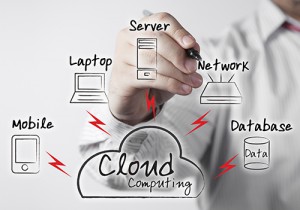 I have been thinking lately about information technology trends and I want to highlight a few in the blog this week. This helps me to keep up on the latest in technology and I hope that it helps you as well.
I have been thinking lately about information technology trends and I want to highlight a few in the blog this week. This helps me to keep up on the latest in technology and I hope that it helps you as well.
The Cloud
According to a recent list from Gartner, one of the emerging trends over the next couple of years is that the cloud will become the most important data repository. This will have significant impact on IT organizations in the fact that devices such as PCs and laptops will be merely a window into the data and the applications. The computer will not actually house information; it will all be hosted in the cloud. Laptops could become simple terminals and more computing will be pushed to the tablet, which could serve the same function. With this push to mobile devices, the desktop PC could drop out of the scene completely. Device management will change dramatically, especially as employees become even more mobile.
Mobile
Another trend identified by Gartner is an increasingly mobile workforce. This includes not only telecommuters, but also those working in a progressively 24/7 world on company-issued devices as well as on personal devices. The line is blurring between the two, and IT organizations need to get a handle on who and what devices have access to their proprietary information. This goes beyond a Bring-Your-Own-Device (BYOD) policy and enters into the area of network design with an eye toward mobile security.
Security
With the movement towards the cloud and mobile devices, Sophos—the network and server security vendor—predicts there will be more attacks on personal and corporate data. They also predict mobile devices will leave personal data more vulnerable to theft, particularly through the use of apps. With larger numbers of employees working remotely and passing corporate data across their mobile devices, this trend spells trouble for the IT organization. The spotlight will be on them to keep the corporate data safe on the inside and keep viruses and intruders on the outside. More emphasis will be put on security, particularly the mobile variant. The upside to all of this is an increase in opportunities for security professionals. According to Robert Half, the staffing specialists, security professionals are one of the technical specialties in highest demand. If the trend towards mobile and cloud computing continues, this demand will become even more acute.
Thoughts
One of the benefits of trend spotting is that it points to where future opportunities lie. There is a need now for security professionals, cloud computing professionals, and those that can integrate mobile platforms with enterprise applications. If you are at a crossroads in your career, I would explore one of these areas. If you are just starting your IT career or education, I think any of these will be solid fields for years to come, with options to branch out into the periphery. Have you seen any other IT trends worth noting? Let me know. I will highlight other trends in future blog posts.
Kelly Brown is an IT professional, adjunct faculty for the University of Oregon, and academic director of the UO Applied Information Management Master’s Degree Program. He writes about IT and business topics that keep him up at night.


